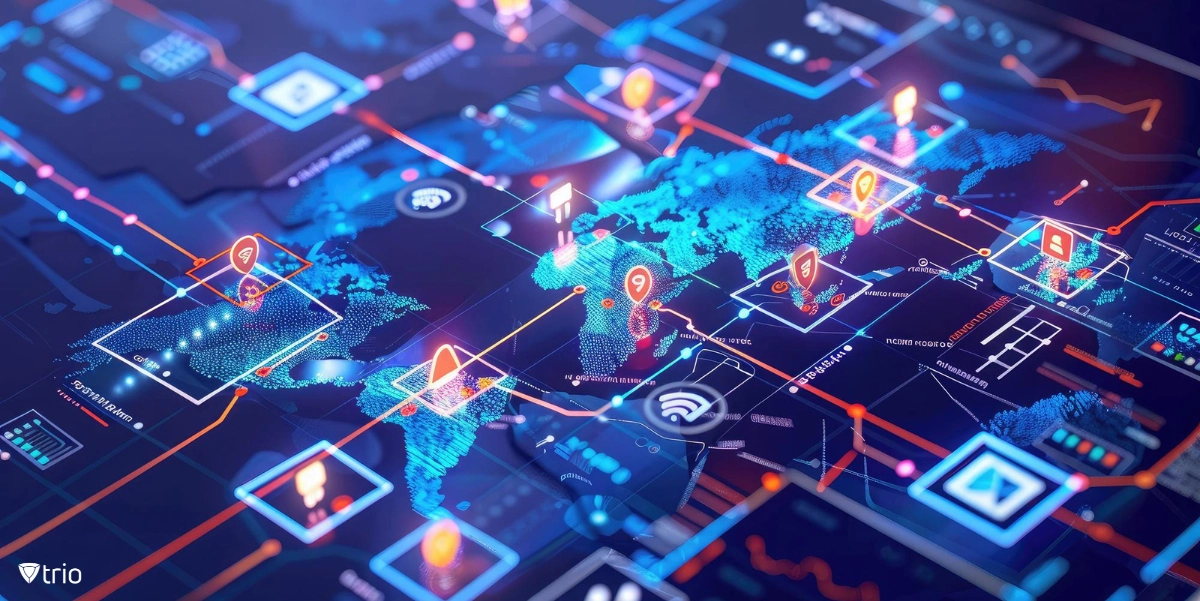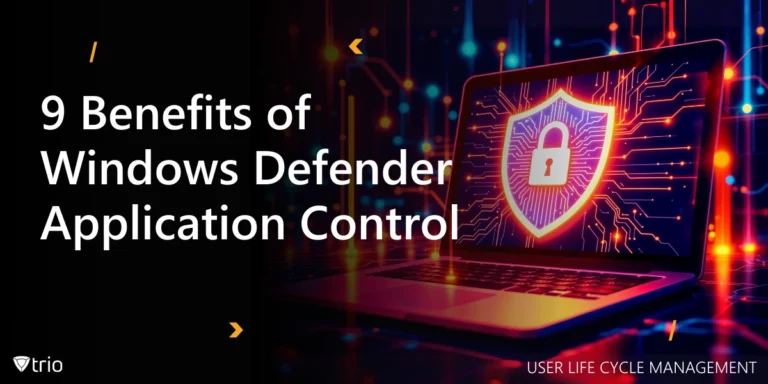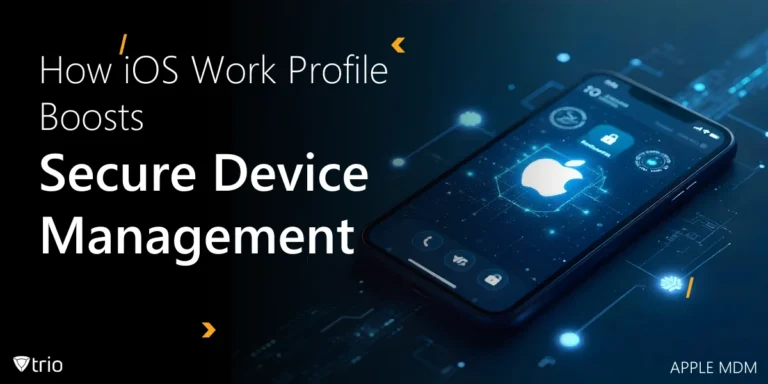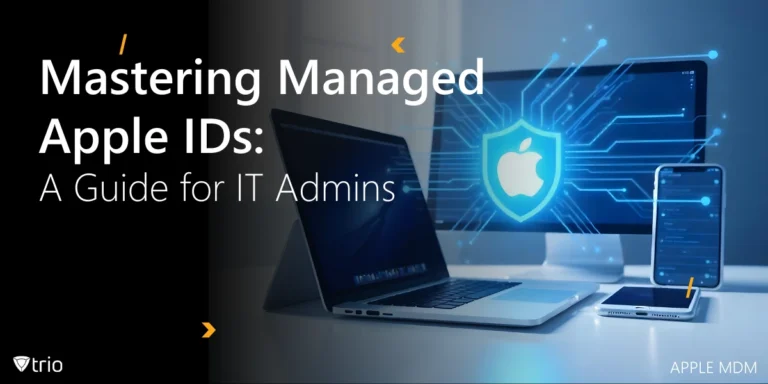In the era of mobile computing, Mobile Device Management (MDM) has become a cornerstone of IT security and device management in organizations. A common question that often arises is “Can MDM track location?” This blog explores the capabilities of MDM systems in location tracking, the practical applications of these features, and the privacy considerations that come into play.
Understanding MDM’s Location Tracking Capabilities
MDM is a technology used by IT departments to oversee, secure, and enforce policies on smartphones, tablets, and other endpoints. This powerful tool is essential for managing the devices within an organization, ensuring they’re both secure and operating efficiently. One of the key features of most MDM solutions is location tracking, which has multiple purposes:
- Locating Devices: MDM systems use GPS and other location services to find the exact location of enrolled devices. This is crucial not just for logistical reasons, such as ensuring devices are where they need to be for operational purposes, but also for security. If a device goes missing or is stolen, being able to quickly locate it can prevent data breaches and loss.
- Location Management Software: Integrated within MDM solutions, this software offers a live view of where devices are at any moment. This real-time visibility is a game-changer for asset management, making it easier for organizations to allocate resources efficiently and respond to issues as they arise.
- Device Location History: Beyond just knowing where a device is now, MDM tools can track where it’s been. This historical data can be invaluable, offering insights into usage patterns, identifying potential security risks, and helping recover lost or stolen devices by retracing their movements.
![]()
Applications of Location Tracking in MDM
Location tracking within MDM systems offers comprehensive insights into the physical movement and status of devices. This capability is essential for a wide range of operational, security, and compliance purposes. In the following, we’ll discuss the key applications of location tracking in MDM, highlighting its pivotal role in enhancing organizational efficiency and security.
Ensuring Security and Compliance
One of the primary applications of location tracking in MDM is ensuring the security and compliance of mobile devices within an organization. Location tracking capabilities enable IT departments to monitor whether devices are within predefined secure or permitted geographic zones. This is particularly crucial for organizations that operate in sensitive industries or have strict compliance requirements regarding where data can be accessed:
- Geo-fencing: Implement geo-fencing to automatically enforce policies or restrictions when a device enters or exits a specific geographical area. For example, sensitive data can be automatically encrypted or wiped if a device leaves a secure location.
- Compliance Monitoring: Continuously monitor device locations to ensure compliance with regulatory requirements, reducing the risk of non-compliance penalties.
Theft Recovery and Asset Management
The ability to track the location of devices also plays a significant role in the recovery of lost or stolen devices, which is vital in mitigating potential data breaches and financial losses. With location tracking, IT administrators can pinpoint the exact location of a missing device, take appropriate actions to secure the data, and possibly recover the hardware:
- Immediate Response: As soon as a device is reported lost or stolen, administrators can lock the device and display a message on the screen to aid in its recovery.
- Data Protection: Remotely wipe sensitive data from lost or stolen devices to prevent unauthorized access, ensuring that company information remains secure.
Field Service Management
For organizations with teams that operate remotely or on-site, such as sales, maintenance, or delivery services, location tracking via MDM enables better coordination and efficiency of field operations. This facilitates real-time management and dispatching, ensuring that field workers are at the right place at the right time:
- Efficient Dispatching: Use location data to dispatch the nearest field worker to a job site, improving response times and customer satisfaction.
- Productivity Monitoring: Monitor the location of field employees during work hours to ensure productivity and verify that employees are at their assigned locations.
- Safety and Accountability: Ensure the safety of field workers by being able to locate them in real time, especially in emergencies.
By leveraging the location-tracking features of MDM solutions, organizations can enhance security protocols, recover assets more effectively, and manage field operations with greater efficiency.
Privacy Considerations and Best Practices
When it comes to leveraging Mobile Device Management (MDM) for location tracking, privacy considerations must be at the forefront of an organization’s strategy. Ensuring the ethical use of MDM capabilities is not just about adhering to legal requirements; it’s also about maintaining trust and transparency with employees or users whose devices are being managed. Here are key practices to follow:
- Consent and Transparency: Before initiating location tracking on any device, it’s paramount to obtain straightforward agreement from the device owner or user. This means clearly explaining the purpose of tracking, what data will be collected, and how it will be used. Furthermore, organizations should be transparent about their location-tracking policies and practices. This includes providing easy access to privacy policies and being open to answering any queries users might have regarding their data.
- Limiting Data Collection: Collect location data only to the extent necessary for the intended purpose, whether for security, asset management, or compliance. Unnecessary data collection can breach trust and increase liability and data management overheads. Moreover, access to location data should be restricted within the organization. Only authorized personnel who require this data for their job function should have access, and even then, the principle of least privilege should apply – limiting access to the minimum necessary for the task at hand.
- Securing Location Data: Protecting location data from unauthorized access is critical. This involves employing strong encryption for data, regularly updating security protocols, and using multi-factor authentication for system access. In addition, conduct regular audits and security assessments to ensure that location data is securely stored and managed. This helps in identifying and rectifying potential vulnerabilities before they can be exploited.
In addition to following best practices for privacy and data security, it’s crucial for organizations to develop a comprehensive MDM Policy. This policy should clearly define how location tracking and other MDM functionalities are used, ensuring transparent communication and adherence to privacy standards.
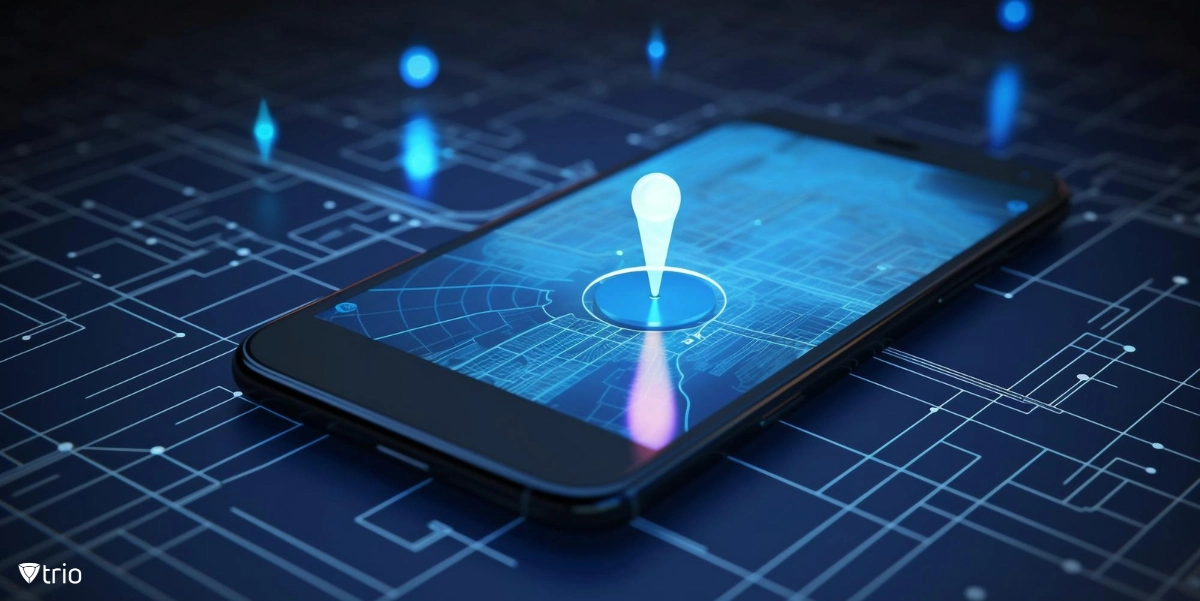
How to Track Device Location with MDM
MDM solutions offer the capability to identify the location of each device, enhancing security and operational efficiency. Here’s a step-by-step guide on leveraging MDM to track device location effectively.
Selecting the Right MDM Solution
Begin by choosing an MDM solution known for its comprehensive location-tracking capabilities. The ideal MDM platform offers not just real-time tracking but also detailed reports on location history, geofencing, and customizable alerts for when devices enter or leave predetermined areas.
Consider the scalability of the MDM solution to ensure it can handle the growing number of devices in your organization. A scalable MDM platform adapts to your evolving needs, providing consistent performance as you expand the number of your devices.
Enrollment and Configuration
Once you’ve selected an MDM solution, the next step is to enroll the devices into the MDM platform. This process typically involves installing an MDM agent on the device and registering it with your organization’s MDM server.
Ensure that location services are enabled on each device. This might require configuring settings on the devices directly or remotely setting policies via the MDM dashboard that mandate the activation of location services.
Utilizing the MDM Dashboard for Location Tracking
With devices enrolled and location services active, use the MDM dashboard to start monitoring the real-time location of your devices. The dashboard should offer a map view, displaying the current location of each device and providing tools to zoom in for more details or filter by device groups.
Beyond real-time tracking, access to location history is crucial for analyzing movements over time, investigating incidents, or auditing device usage. Look for features within the MDM platform that allow you to review historical location data, set time ranges for analysis, and export reports for further examination.
Advanced MDM solutions offer geofencing capabilities, enabling you to define geographical boundaries and receive alerts when devices enter or leave these areas. Use this feature to enhance security, manage field operations more effectively, or ensure compliance with organizational policies regarding device movement and usage.
See Trio in Action: Get Your Free Trial Now!
Conclusion
Location tracking through MDM provides valuable benefits for organizations, from enhancing security to improving operational efficiency. However, it’s essential to balance these advantages with respect for user privacy and compliance with data protection laws. By choosing the right MDM solution and adhering to best practices, companies can leverage location tracking effectively and ethically.
Trio offers a sophisticated MDM solution that incorporates advanced location tracking capabilities, designed to meet the needs of modern organizations while prioritizing user privacy. With Trio, businesses can effectively manage the location of their devices, guaranteeing security and efficiency while maintaining privacy. Discover how Trio can simplify your location management and device tracking needs using its free demo today.
